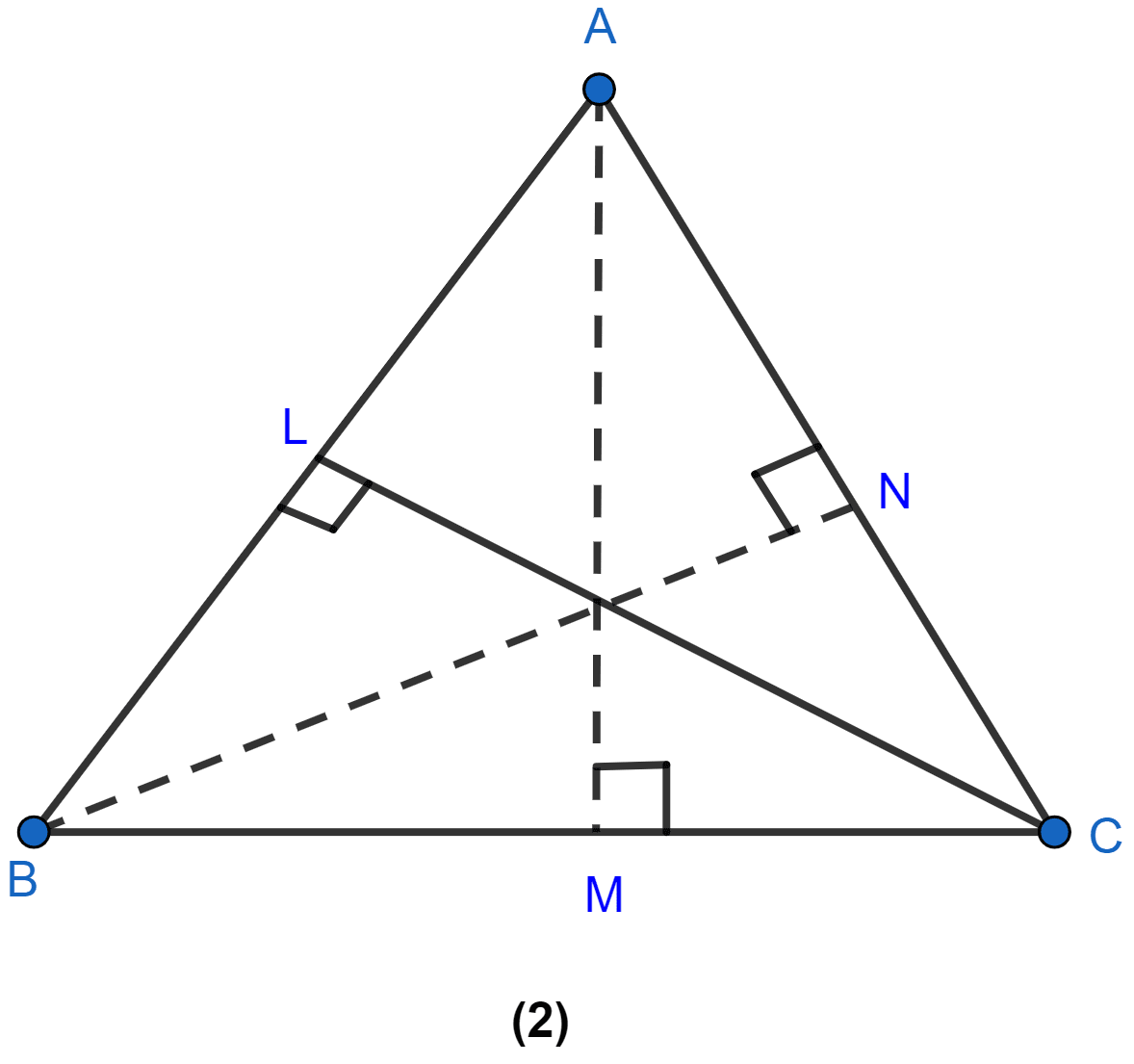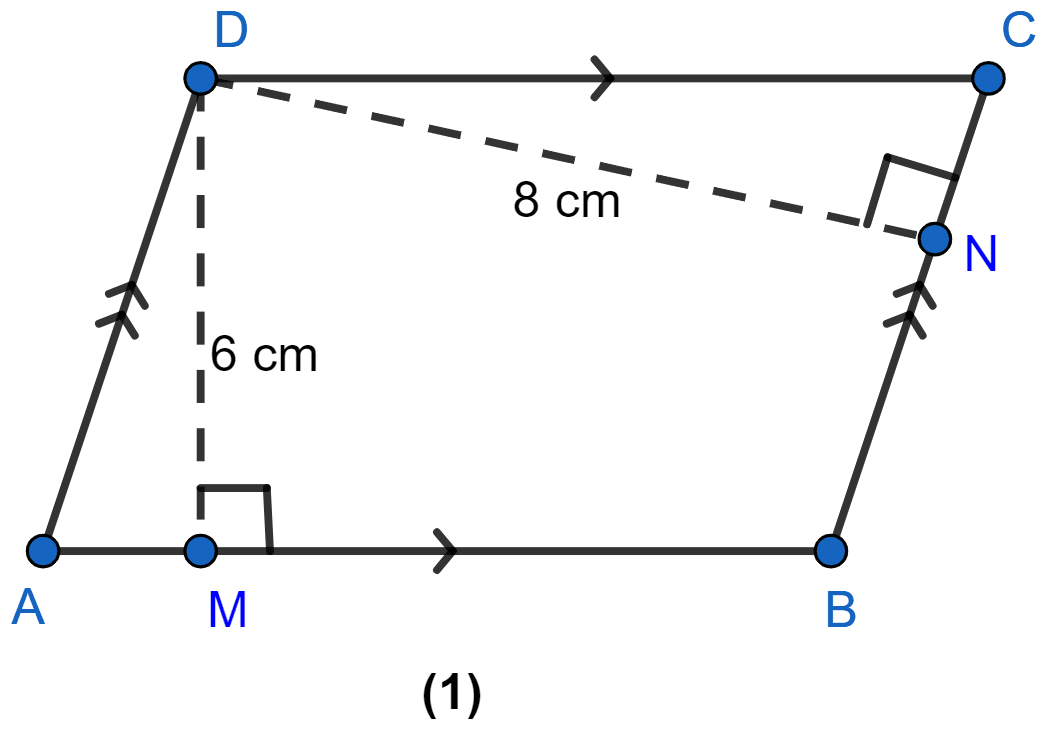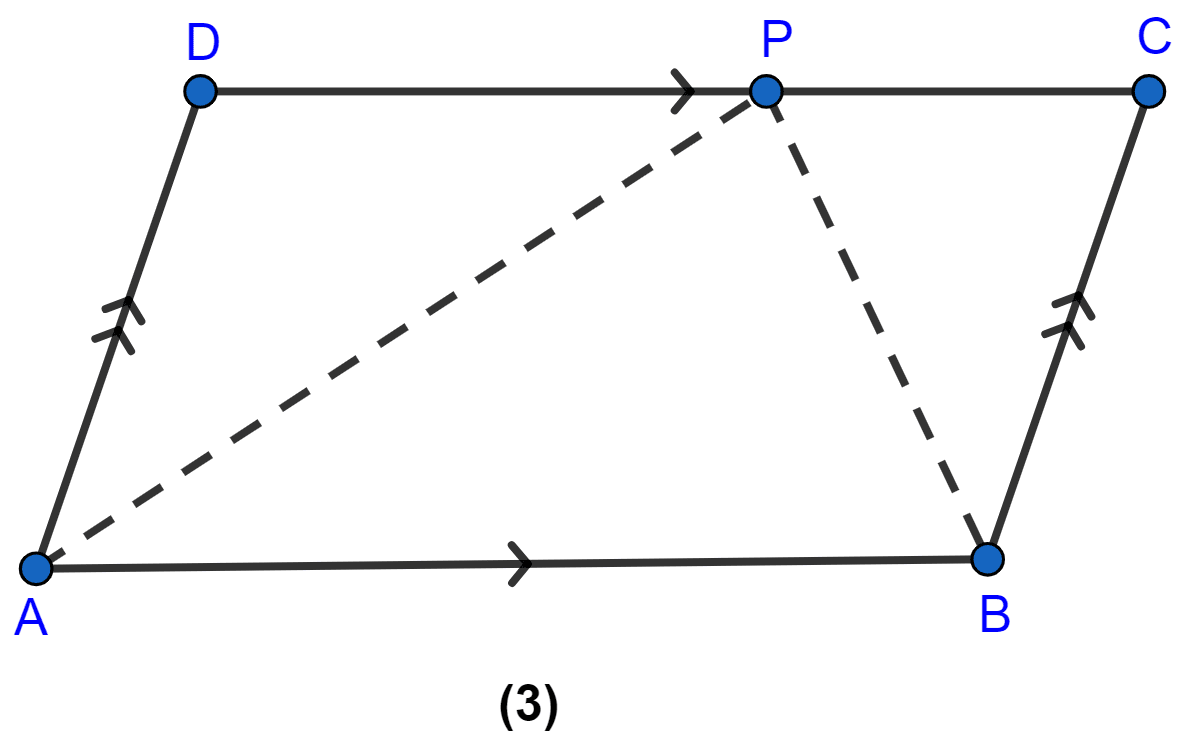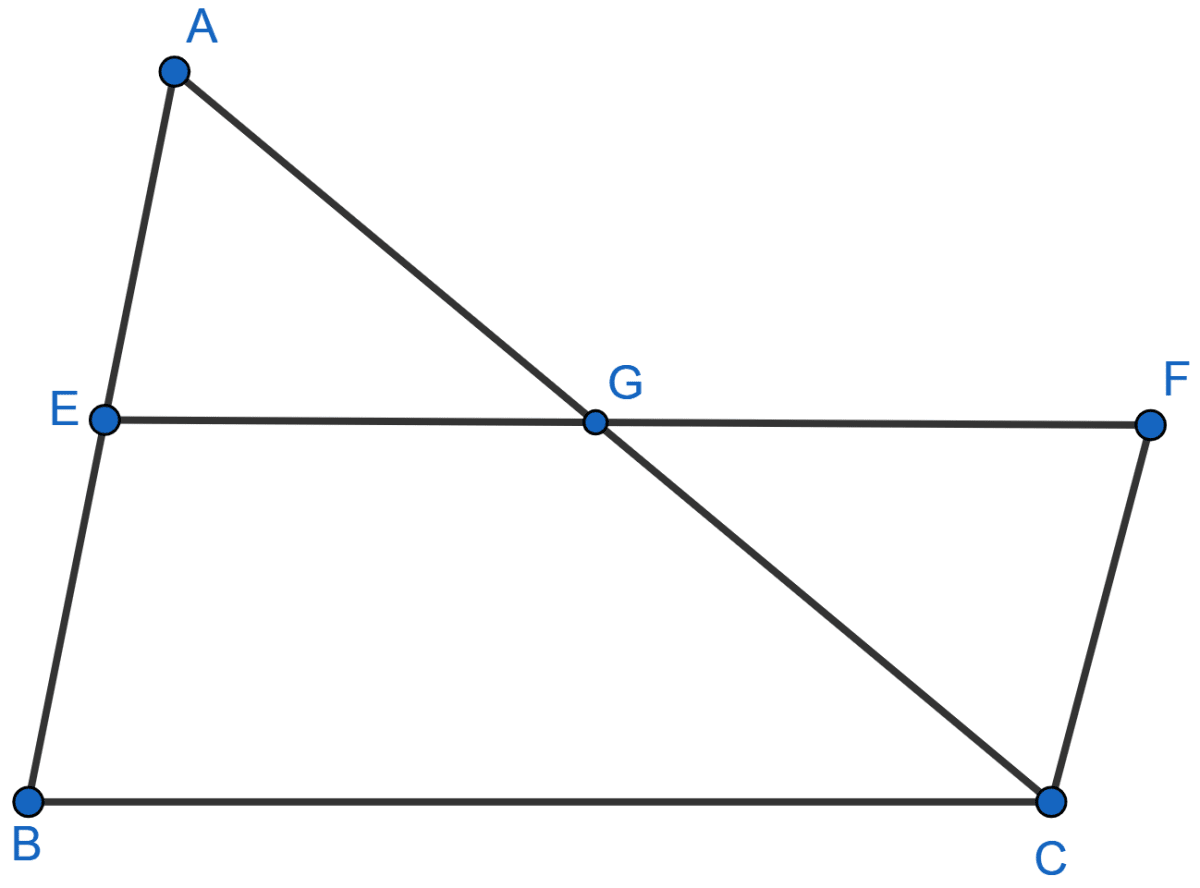Mathematics
In the figure (2) given below, the perimeter of ∆ABC is 37 cm. If the lengths of the altitudes AM, BN and CL are 5x, 6x, and 4x respectively, calculate the lengths of the sides of ∆ABC.

Theorems on Area
24 Likes
Answer
Let us consider BC = p, CA = q.
From figure,
Perimeter of ∆ABC = AB + BC + CA
⇒ 37 = AB + p + q
⇒ AB = 37 – (p + q)
Area of ∆ABC = × base × height
= × BC × AM
= × p ×
∴ Area of ∆ABC = × p × ………(i)
Also,
Area of ∆ABC = × CA × BN
= × q ×
∴ Area of ∆ABC = × q × ………(ii)
Also,
Area of ∆ABC = × AB × CL
= × (37 - p - q) ×
∴ Area of ∆ABC = × (37 - p - q) × ………(iii)
From equation (i) and (ii) we get,
From equation (ii) and (iii) we get,
⇒ CA = q = 10 cm.
⇒ BC = p = cm.
⇒ AB = (37 - p - q) = (37 - 12 - 10) = 15 cm.
Hence, AB = 15 cm, BC = 12 cm and CA = 10 cm.
Answered By
12 Likes
Related Questions
ABCD is a rectangle and P is the mid-point of AB. DP is produced to meet CB at Q. Prove that the area of rectangle ABCD = area of ∆DQC.
In figure (1) given below, the perimeter of the parallelogram is 42 cm. Calculate the lengths of the sides of the parallelogram.

In the figure(3) given below, ABCD is a parallelogram. P is a point on DC such that area of ∆DAP = 25 cm2 and the area of ∆BCP = 15 cm2. Find
(i) area of || gm ABCD
(ii) DP : PC.

In the adjoining figure, E is the midpoint of the side AB of a triangle ABC and EBCF is a parallelogram. If the area of ∆ ABC is 25 sq. units, find the area of || gm EBCF.
